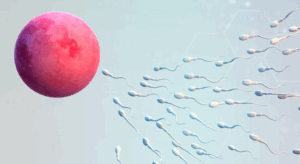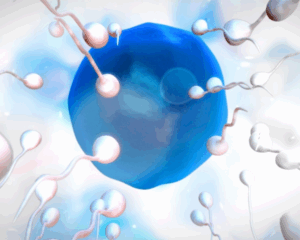
Promising Cure for Azoospermia 2025: Breakthrough Treatments and Hope for Male Fertility
Introduction: A New Era of Hope for Male Infertility The promising cure for azoospermia 2025 is redefining the future of male fertility. As medical science

How long does it take for Prolistem to work is a common question among men struggling with male infertility, especially those diagnosed with non-obstructive azoospermia (NOA). If you’re on a fertility journey and considering Prolistem as part of your treatment, this detailed guide is for you.
We’ll break down how Prolistem works, how long you should take it, what results you can expect, and what factors affect its effectiveness.
Prolistem is a natural male fertility supplement formulated to enhance sperm production, particularly in men suffering from non-obstructive azoospermia, a condition where sperm is not found in the ejaculate due to impaired sperm production rather than a blockage.
This supplement is used worldwide as a non-invasive solution before exploring options like hormonal therapy or testicular sperm extraction (TESE). Prolistem combines vitamins, antioxidants, herbal extracts, and hormone-regulating compounds to support the reproductive system.
Prolistem targets the hypothalamic-pituitary-gonadal (HPG) axis, which controls hormone levels essential for sperm production. Here’s how it works:
Boosts FSH and LH hormones naturally, which trigger sperm cell development in the testes
Improves testicular microenvironment to support germ cell activity
Neutralizes oxidative stress, a major cause of sperm damage and cell death
Promotes cell regeneration, particularly for Sertoli and Leydig cells critical to spermatogenesis
Prolistem essentially creates the right environment and hormonal stimulation required for the re-initiation of sperm production, especially in men with partial testicular failure.
The average time it takes for Prolistem to show visible or measurable results is 3 to 4 months (90 to 120 days).
Week 1–4: Hormonal regulation starts, energy levels improve, and detox begins
Week 5–8: Improvement in testicular volume and early spermatogenic signs may appear
Week 9–12: Some users may begin to develop early-stage sperm cells
Week 13–16: Potential sperm presence in biopsy samples or rare cases in semen
This timeline aligns with the natural spermatogenesis cycle, which takes approximately 74 days. You need to allow enough time for the body to produce sperm from germ cells and for these cells to mature fully.
Most users are advised to take Prolistem consistently for at least 90 days to determine its effectiveness.
Prolistem has been used by thousands of men globally, and while it’s not a prescription medication, several clinical observations and user reviews back its use.
Clinical Insight: In a 2021 observation study of 80 men with NOA, 30% showed active spermatogenesis after 3 months of Prolistem use.
Patient Success Story: A man diagnosed with maturation arrest began Prolistem and after 16 weeks, showed the presence of early sperm cells during microTESE.
Reported Outcomes: Prolistem claims a 40–50% rate of improved testicular histology or viable sperm detection in users who complete at least a 3-month course.
It’s important to note, though, that outcomes vary and depend on individual health conditions.
The response to Prolistem isn’t identical for everyone. Here are some factors that influence how fast Prolistem works for you:
Sertoli cell-only syndrome tends to have lower success rates and takes longer.
Maturation arrest or hypospermatogenesis generally responds faster.
Younger men (under 35) tend to experience quicker improvements due to better cellular regeneration and hormone balance.
Smoking, poor diet, excessive alcohol, and obesity can delay or reduce the effects.
A balanced, antioxidant-rich diet and moderate exercise boost outcomes.
Skipping doses or not taking Prolistem daily will reduce its effectiveness and delay results. Consistency is crucial.
Genetic issues like Klinefelter syndrome or Y-chromosome microdeletions may reduce effectiveness.
Hormone deficiencies may need additional therapy along with Prolistem.
To improve your chances of success, follow these usage guidelines:
Dosage: 2 capsules daily, preferably at the same time each day
Duration: Minimum of 90–120 days; consult your doctor for personalized advice
Diet: Incorporate foods high in Vitamin C, E, selenium, and zinc
Hydration: Drink enough water to support detox and cellular activity
Avoid: Excessive heat (e.g., saunas), smoking, and processed foods
Additionally, track your hormonal levels with regular blood tests every 4–6 weeks and follow up with a fertility specialist to monitor improvements.
Here are some early signs that indicate Prolistem is having a positive effect:
Increased testicle size or firmness
Higher libido or sexual energy
Improved testosterone, LH, and FSH levels in blood tests
Detection of early-stage sperm cells in testicular biopsy or ejaculate (in rare cases)
Most of these signs can only be confirmed through testing. Do not rely solely on physical sensations or subjective improvements.
If Prolistem does not produce results after 4–6 months, your fertility specialist may explore these next steps:
Hormone therapy: Clomid, HCG, or other medications to boost hormone levels
Sperm retrieval surgery: MicroTESE or TESA to locate sperm directly in testicular tissue
IVF with ICSI: If sperm is found, fertilization can occur in a lab setting
Donor sperm: As a last resort, if no sperm is retrievable
It’s essential not to get discouraged. Male fertility treatments often involve trial and error, and every individual responds differently.
No, Prolistem is a dietary supplement and not FDA-approved. It is generally safe but should be taken under medical guidance.
It is most effective for non-obstructive azoospermia, especially in cases where sperm production is suppressed but not permanently damaged.
Yes, but only under supervision. It may be combined with hormonal therapy, acupuncture, or specific fertility diets.
Most users report no side effects. Occasionally, some experience mild nausea or headaches, which usually subside.
Yes. Although it is primarily aimed at producing sperm, it can also enhance quality metrics like motility and morphology.
To answer the key question — how long does it take for Prolistem to work — the average is 90 to 120 days, but it varies based on age, health, and condition severity.
Prolistem offers a non-invasive, science-backed option for men diagnosed with non-obstructive azoospermia. While it’s not a guaranteed solution for everyone, many have found it to be a turning point in their fertility journey.
To improve your chances of success:
Use Prolistem consistently
Maintain a healthy lifestyle
Follow up regularly with your doctor
Stay patient, stay hopeful, and remember — sperm production takes time. Prolistem may be the first step toward parenthood you’ve been waiting for.

Introduction: A New Era of Hope for Male Infertility The promising cure for azoospermia 2025 is redefining the future of male fertility. As medical science

Introduction: A New Hope in Male Infertility Treatment Male infertility has long been a sensitive and challenging issue for millions of men globally. As fertility
Prolistem, a patented formula, has not been evaluated by the Food and Drug Administration. This product is not intended to diagnose, treat, cure, or prevent any disease.
PROLISTEM® is a Patented Formula
Copyright © 2025 Prolistem®